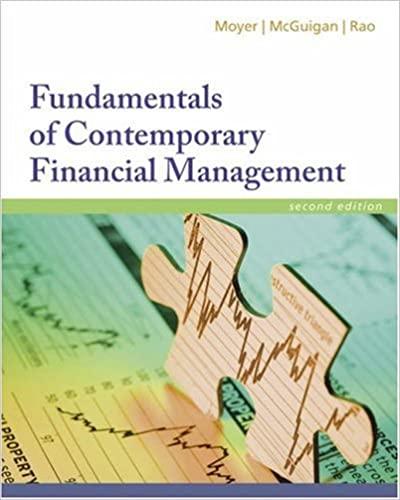Question
TRUE OR FALSE 1. The Cost of Capital is the overall required return for the firm as a whole. 2. If the firm earns more
TRUE OR FALSE
1. The Cost of Capital is the overall required return for the firm as a whole.
2. If the firm earns more than its cost of capital it will destroy value.
3. Hurdle rates are basically specific costs of capital for specific investment projects. Hurdle rates may be higher or lower than the firm's cost of capital depending on the risk level of the project.
4. The firm's cost of capital depends on the risk level of the firm. If the firm becomes riskier over time its cost of capital will increase, all else equal. If the firm becomes less risky over time its cost of capital will decrease, all else equal.
5. If a company's stock price declines dramatically, that causes the firm's assets and operations to become much riskier.
6. One simple way to estimate the cost of debt is to divide the firm's interest expense by its debt level.
7. If the CFO of a firm wants to finance the company in the future with a mix of 70% common equity and 30% debt, and if that goal is realistic and obtainable, it is likely that those are the correct weights for equity and debt even if the firm's current capital structure is 60% common equity and 40% debt.
8. Estimating the hurdle rate is the first step in the capital budgeting process
9. Estimating the cost of common stock is typically the most difficult part of computing the firm's cost of capital, and it has the highest margin of error of any of the inputs to the WACC equation.
10. We have several methods for estimating the cost of common stock, but none of them are perfect.
Step by Step Solution
There are 3 Steps involved in it
Step: 1

Get Instant Access to Expert-Tailored Solutions
See step-by-step solutions with expert insights and AI powered tools for academic success
Step: 2

Step: 3

Ace Your Homework with AI
Get the answers you need in no time with our AI-driven, step-by-step assistance
Get Started


